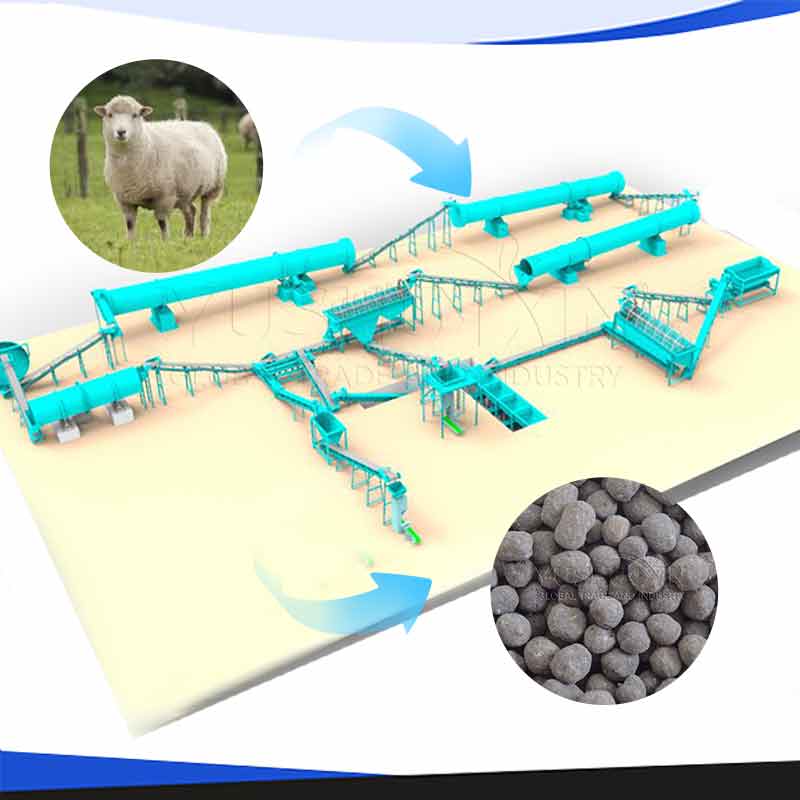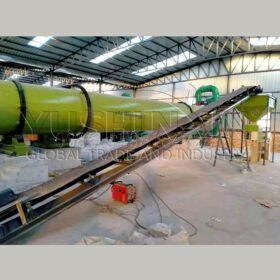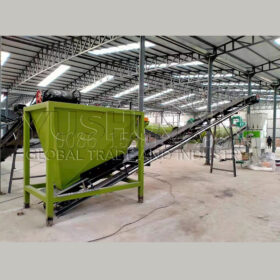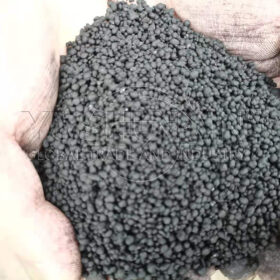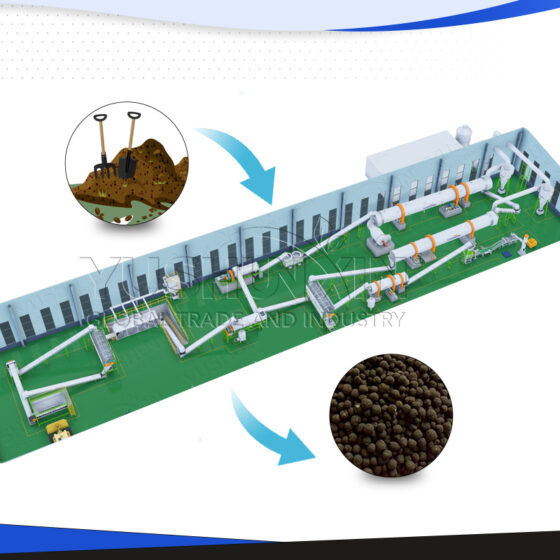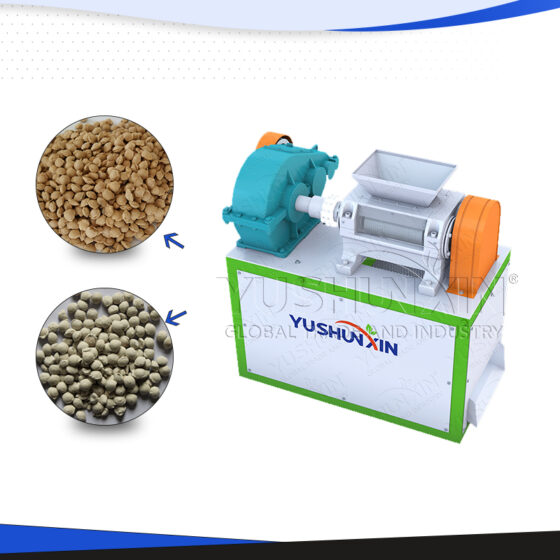The sheep manure organic fertilizer production line is to convert sheep manure into high-efficiency organic fertilizer. The main process flow includes raw materials (sheep manure and auxiliary materials) → fermentation → crushing → screening → mixing → granulation → drying → cooling → packaging → finished product storage.
1. Raw Material Preparation
The main raw material is fresh sheep manure. Some auxiliary materials, such as rice husks, sawdust, straw, etc., may also be added to adjust the carbon-nitrogen ratio and moisture content of the raw materials.
2. Fermentation Process
Compost Fermentation: Mix sheep manure and auxiliary materials in a certain proportion, pile them up, and conduct aerobic fermentation. During the fermentation process, regular turning is needed to ensure adequate oxygen supply. Crawler Type compost turner or Groove-type fermentation equipment can be used, which can more effectively control temperature and humidity and improve fermentation efficiency.
3. Crushing and Screening
After fermentation, the materials are crushed to facilitate subsequent granulation and mixing. After crushing, screening is required to remove large clumps and impurities, ensuring the uniformity of the finished product.
4. Mixing and Granulation
Mixing: Mix the fermented sheep manure with other organic or inorganic fertilizers, microbial agents, etc., to create different types of organic fertilizers.
Granulation: Use the organic fertilizer granulator to form the mixed materials into granules. Common granulation equipment includes disc granulators, drum granulators, and new type organic fertilizer granulators.
5. Drying and Cooling
Drying: The granulated organic fertilizer has a high moisture content and needs to be dried using a dryer to facilitate storage and transportation. The drying temperature and time need to be controlled appropriately to prevent nutrient loss.
Cooling: The dried organic fertilizer granules are at a high temperature and are cooled using a cooler to reach a normal temperature, making them ready for packaging.
6. Packaging
The cooled organic fertilizer granules are packaged using a packaging machine and are packed into bags of different specifications as required for market.
7. Storage and Transportation
The packaged organic fertilizer should be stored in a dry and ventilated warehouse to prevent moisture. During transportation, attention should be paid to moisture-proofing and preventing damage.
